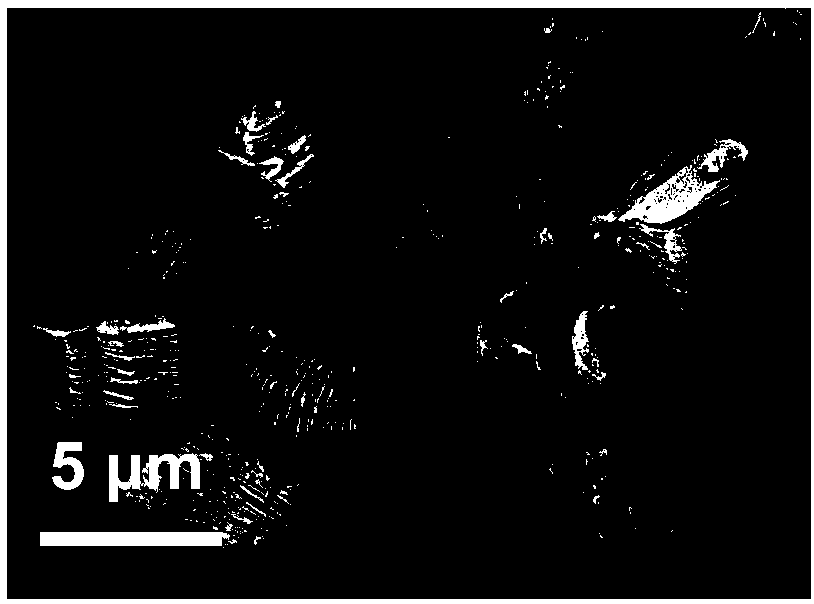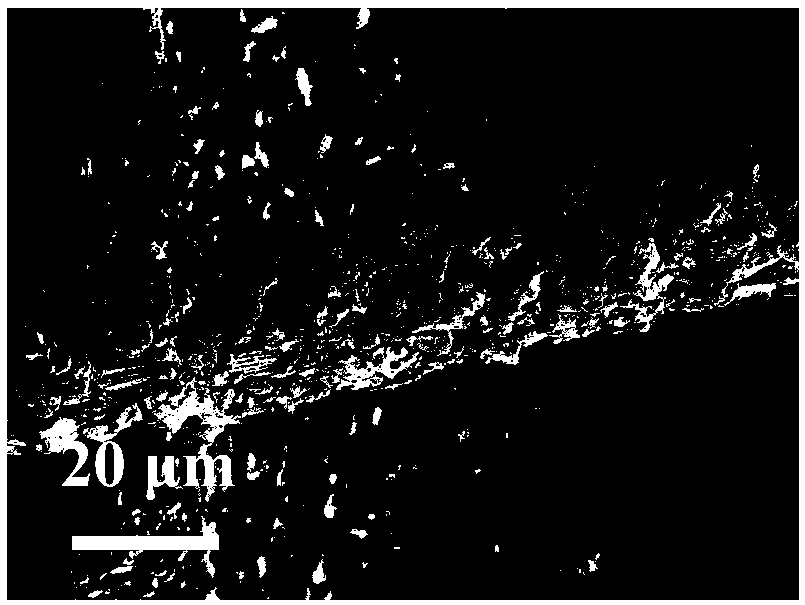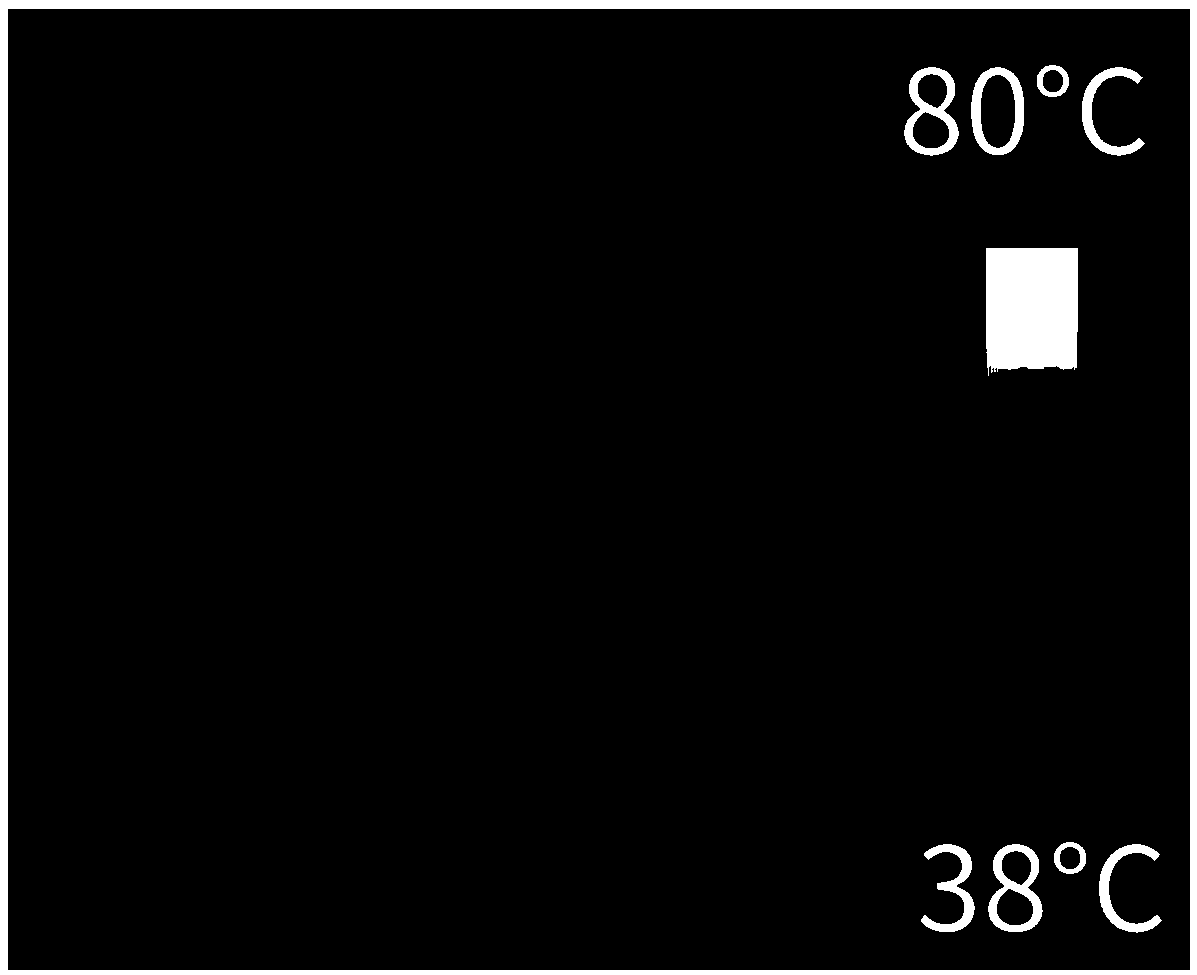Photothermal biological anode, preparation method thereof and application of photothermal biological anode
A biological anode and photothermal technology, applied in the field of electrochemical catalysis, can solve the problems of increased waste water treatment cost, poor practicability, and poor waste water treatment effect, and achieve the effects of low cost, excellent power generation performance, and simple operation
- Summary
- Abstract
- Description
- Claims
- Application Information
AI Technical Summary
Problems solved by technology
Method used
Image
Examples
Embodiment 1
[0034] This embodiment prepares a photothermal bioanode, and its specific preparation process includes the following steps:
[0035] 1. Take a 200-mesh sieve and 0.5g of Ti 3 AlC 2 Put it in a 50mL polytetrafluoroethylene beaker, add 10mL of HF solution with a concentration of 48% by mass, and place the beaker on a magnetic stirrer for stirring and mixing; then, heat to 60°C, react at a constant temperature for 24h, and centrifuge to obtain Ti 3 C 2 T x As the MXene material; then, the MXene material was washed alternately and repeatedly with deionized water and absolute ethanol until the washing solution was neutral, then placed in a vacuum drying oven at 80°C for drying for 24 hours, taken out, and ground through a 200-mesh sieve to obtain MXene nanolayered materials.
[0036] 2. Disperse 0.25 mg of MXene nano-layered material in 0.5 mL of absolute ethanol, add 0.1 mL of binder, stir and mix to obtain a slurry; wherein the binder is selected from perfluorosulfonic acid t...
Embodiment 2
[0039] Embodiment 2 Photothermal conversion performance test
[0040] 1. Grouping
[0041] Take ordinary carbon felt as the reference;
[0042] The photothermal bioanode prepared in Example 1 was taken as the sample.
[0043] 2. Sunlight
[0044] The reference substance and sample were exposed to sunlight for irradiation, and the sunlight power density was measured by an optical power density meter (TES-1333) to be 1000W / m 2 , using an infrared thermal imaging camera (FTIRETS320) to observe and measure the surface heating process of the reference substance and the sample, and when the surface temperature is constant, take an infrared thermal imaging photograph, and the results are as follows image 3 and Figure 4 shown.
[0045] By comparison, it can be found that the MXene nano-layered material prepared by the present invention has good light absorption ability and photothermal conversion effect, and has a wide absorption spectrum, and the absorption light band range ca...
Embodiment 3
[0046] Application effect of embodiment 3 in three-electrode bioelectrochemical system
[0047] 1. A three-electrode electrochemical system device was constructed according to the traditional method, and the ambient temperature in the reaction vessel was controlled by an external circulating water system. The ordinary carbon felt and the photothermal biological anode prepared in Example 1 were used as anodes respectively, and they were divided into control group 1. and experimental group 1.
[0048] The anodes of control group 1 and experimental group 1 were cut into a square shape of 4 cm × 4 cm with a thickness of 0.5 cm. Titanium wire was used as the auxiliary electrode and saturated calomel electrode was used as the reference electrode to construct a three-electrode system microbial electrochemical system.
[0049] 2. Use anaerobic mixed bacterial seed solution and sodium acetate culture solution, place it in a 30°C constant temperature incubator for cultivation, and conne...
PUM
| Property | Measurement | Unit |
|---|---|---|
| area | aaaaa | aaaaa |
| diameter | aaaaa | aaaaa |
Abstract
Description
Claims
Application Information
 Login to View More
Login to View More - R&D
- Intellectual Property
- Life Sciences
- Materials
- Tech Scout
- Unparalleled Data Quality
- Higher Quality Content
- 60% Fewer Hallucinations
Browse by: Latest US Patents, China's latest patents, Technical Efficacy Thesaurus, Application Domain, Technology Topic, Popular Technical Reports.
© 2025 PatSnap. All rights reserved.Legal|Privacy policy|Modern Slavery Act Transparency Statement|Sitemap|About US| Contact US: help@patsnap.com



